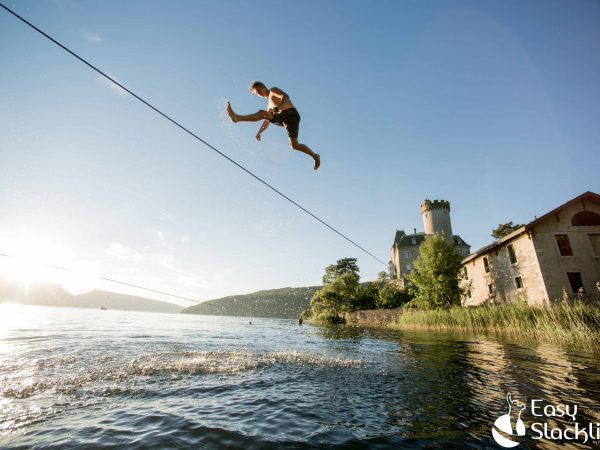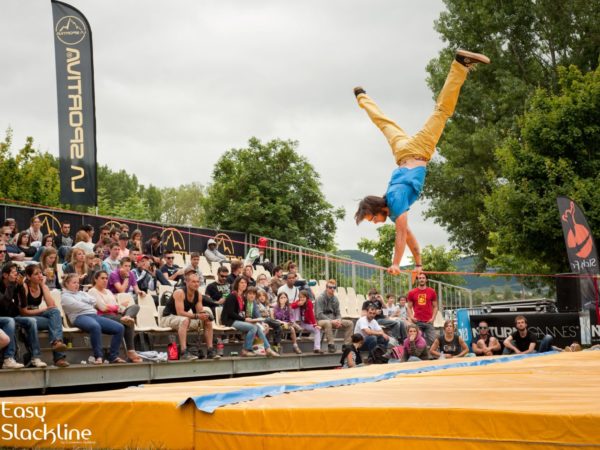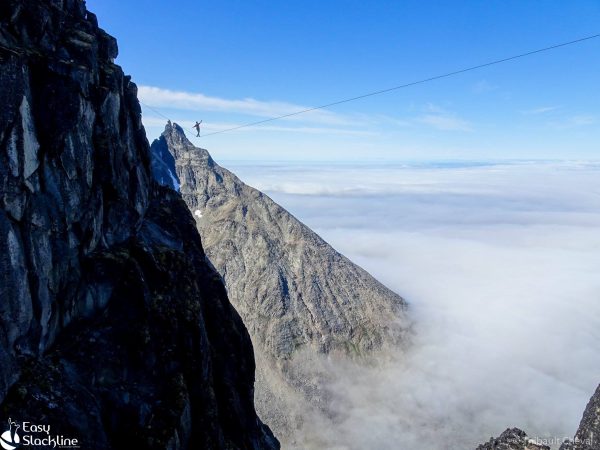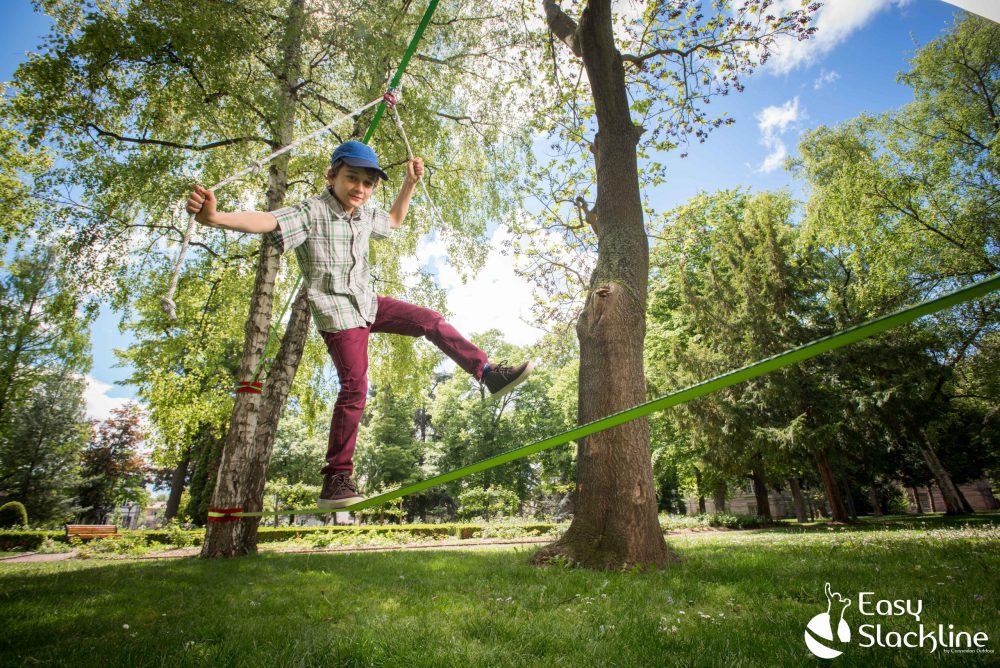Slackline origins
1. Slacklining, a definition
Slackline (or slack line) literally means « slack »« line », From slack + line. The verb is a back-formation from slacklining. An another translation could also be « dynamic line ». The idea is the same : an elastic flat webbing (in most cases). The noum « slacklining » is used for the discipline and « slackline » refers mostly to the equipment (slackline kit) or the webbing (slackline webbing).
The main goal in slacklining is to walk in balance on a thin/narrow flat webbing (25mm large), without accessories (unlike tightrope walking). The slackline is generally tight between two trees.
The instability of the slackline will be directly related to its length, elasticity and weigth :
- More length means more difficulty crossing the slackline
- More length also means higher anchoring points, which leads to more « sag », in other words « sinking into the line ».
- The more elastic the slackline, more the movement will be loose and slow.
- The heavier (gramm per meter) the slackline, the higher the technical level to cross it.
Find more informations on the International Slackline Association (ISA) : click here
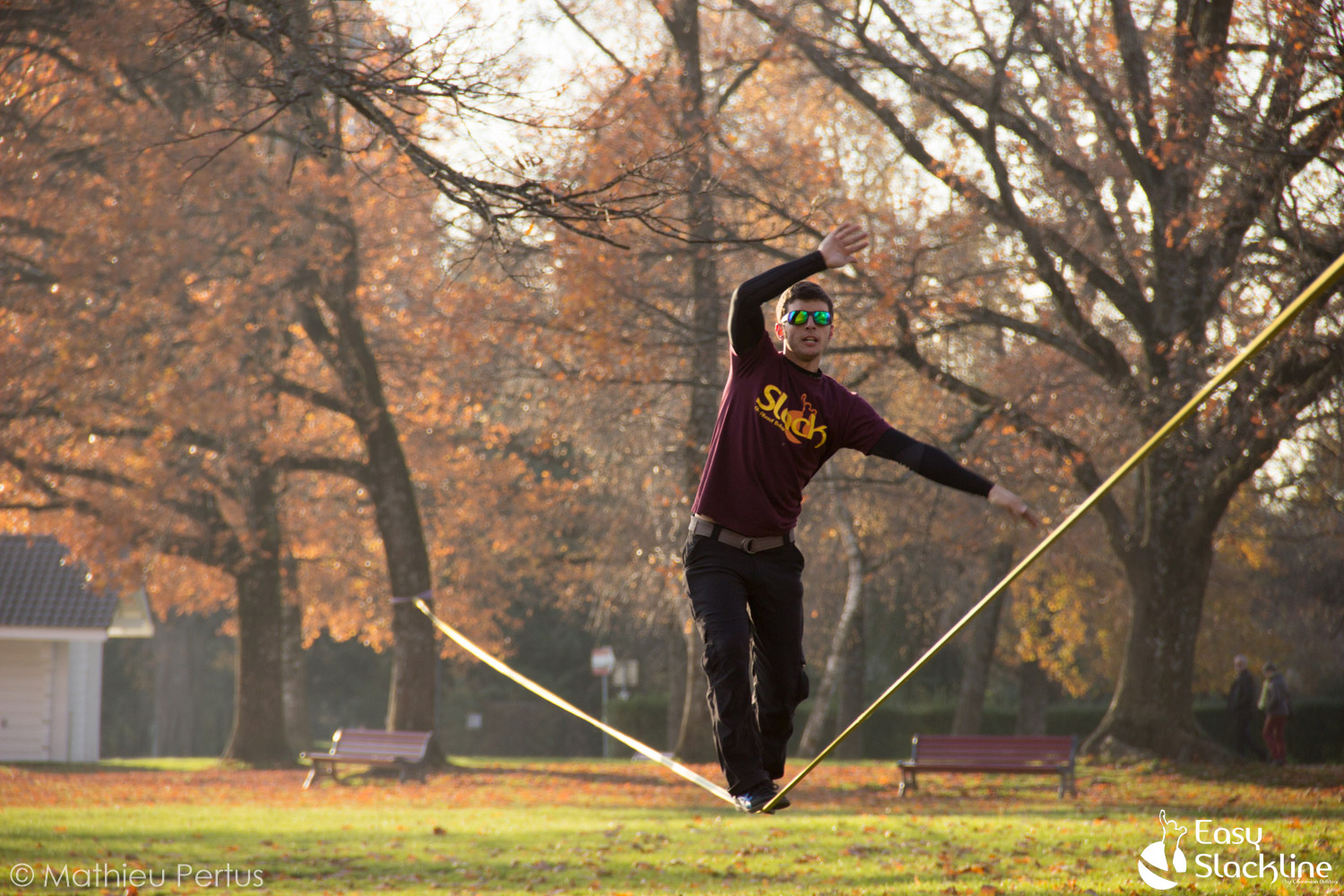
2. Where does slackline comes from ?
Modern day slacklining originated with rock climbers in the 1980’s. It all began in Yosemite National Park (USA) with the sport’s founders Adam Grosowsky and Jeff Ellington.
Using climbing gear, they rigged inch-thick webbing between two trees to make balancing extra dynamic — to get an occupation during resting and bad weather days. Its improve their balance skills, focus and core muscles while resting.
Slacklining slowly gains more popularity into the climbing world. In Europe, slacklining appears during the early 2000s. Always in connection with the climbing scene. Especially in Germany and the Scandinavians countries.
It’s around the early 2010’s that slacklining starts its media ascension and its separation from the climbing world. Andy Lewis (Sketchy Andy – USA) is one the first athletes to promote slacklining to a large population through his videos and various achievements in competition.
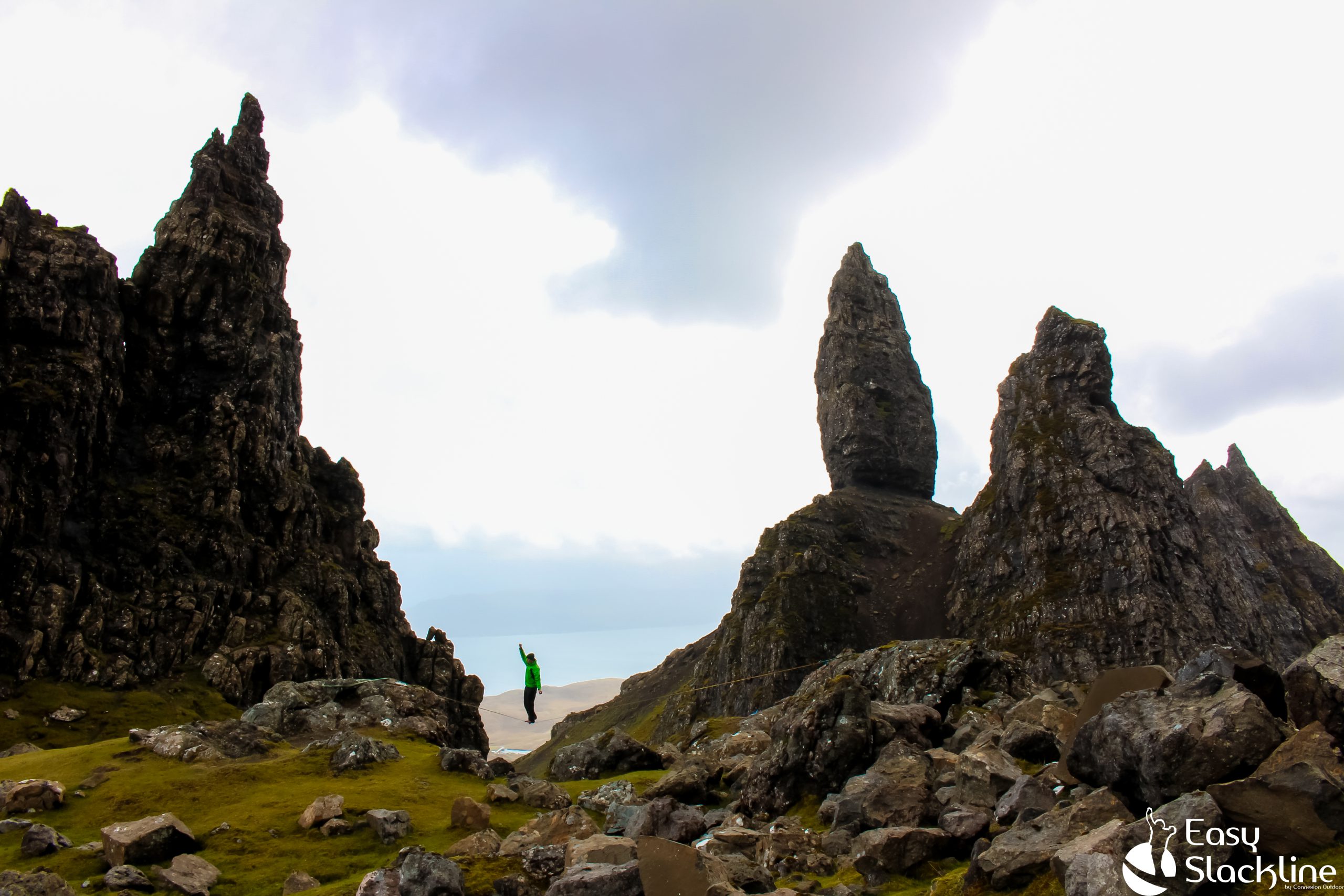
3. The evolutions of slacklining
An activity still evolving ?
It’s as if this sport has never stopped to evolving ! Today’s slacklining is very different from the early 80’s. Back then sightly tight above the ground to walk on a few feets (round 40/60), and today people walk hundreds of meters in the air.
The most popular practicing styles are today :
- Tricklining : To perform a combination of acrobatics, and slacklining. Trickliners bounce, jump, flip, and spin like on a trampoline.
- Longlining : To walk the longest distance you can on slackline above the ground, without a safety leash. The length can be between 60 to 600m (world record) !
- Highlining : To walk a slackline high in the air, the void underneath, you wear a harness and are safely leashed. Length can vary from 30 to 2KM (world record) !
- Waterlining : It’s like longlining but over water. It brings an extra difficulty with the movement of the water. Falls are way funnier in the water than on the ground !
There are still other ways to practice. The installation of a spaceline (a small network of lines tight to each other, like a spider’s web), or the rodeoline (a line walked without tension, very saggy), etc.
The creativity and the search for challenge among slackliners have allowed this activity to evolve rapidly. The constant progression in equipements, ever more versatile and efficient, will lead a bigger, crazier, funnier future for slacklining !
The madness of world records
Like any sport activity, slacklining has it own records. Young discipline, still evolving, they do not last long, are regularly beaten, and are finally quite ephemeral.
Nowadays, records follow records and slackliners sometimes hold them only for months or even weeks.
In slacklining (long/water/high/lining), record titles are approved when the crossing is 100 % completed, without a fall, from one side to the other. It is absolutely necessary to walk – the entire length of the line – in a single attempt – without catches.
It’s quite difficult to keep an up-to-date list of all different records because of the rapid evolution of the practice.
Click on these two links for updated informations :
Opposite, the « backstage » of one the last highline world record – 1020m at the time. (Now, its more than 2K! )
Slackline for everyone
Slackline is constantly evolving:
- towards more technical excellence for experts – with e.g. lighter and stronger webbing.
- towards more practicality for beginners – with more user-friendly equipment for families, see the Easy kit opposite. It is accessible to all. It can be an unique moment to share with the family.
Slacklining is also a complement to many other sports and begin to be used in the medical field (see the benefits of the slackline for the body and mind).
4. Slackline pioneers
First name that comes to mind when talking about slacklining is Andy Lewis (USA) aka Sketchy Andy He represents what slacklining is to the general public. Slackline made him famous and he made slackline famous all over the world. Since his debut, he has been relentlessly posting videos of his achievements, excentric views and positive vibes ! If you’re a NFL fan, you probably remember Madonna’s Half Time Show in 2012 where he made an astonishing appearance.
Also worth mentioning are the « Flying Frenchies » (FRA), who with their first movie : “I believe I can fly – the flight of the frenchies”, brought something new into extreme sports and put the aesthetic art of highlining on the map. They were also among the first to perform alpine highlines, and or between two hot-air balloons.
Recently, Nathan Paulin (FRA) has become the face of slacklining in France and Europe. He holds several world records, especially in his favorite discipline : highlining.
In November 2014, he broke the longline record to a length of 601m.
In June 2015, he managed to cross first 403m then 470m at the same place (Cassé de la Rivière de l’Est – Reunion Island)
2016 April 19, he is the first with Danny Mensik (CZ) to cross the kilometer – a 1020m long and 600m high-line. Located in Aiglun.
His longest crossing is a 1662m long and 300m highline in the cirque de Navacelles in June 2017, the 9. The mile !
He also completed the longest urban highline crossing in Paris in 2017. A splendid line above the river Seine, between the Eiffel Tower and Trocadéro! He also achieved the highest urban crossing, between two skyscrapers, in Moscow in 2019.
We can also mentionned Théo Sanson (FRA), Alexander Schulz (ALL), Scott Balcom (USA), Faith Dickey (USA), Lukas Irmler (ALL) …
5. Slacklining in France with Slack.fr
The pillars of the French Slackline scene
In the Hexagon (metropolitan France), until 2005, slackining was almost non-existent. The discipline emerges thanks to the brand Slack.fr, which was fonded in 2005, by Damien Mercier known as the « Father » of the Slackline (on theright on the picture). With his friend Charles Giraud (on the left on the picture), they democratized slacklining by offering specific equipments dedicated to the sport and also by supporting a large number of events in order to spread the discipline to a new public.
Slack.fr (the brand) closed in 2019 and became Easy Slackline but this is an another story…
France is nowadays well represented among the most talented athletes in the world – especially in highlining and longlining. The French hold several records, pas and present, (Nathan Paulin, Théo Sanson, Antony Newton, Laure Millot, Mimi Guesdon, Mia Noblet, etc) or are recognized for the accomplishments like the famous Flying Frenchies.
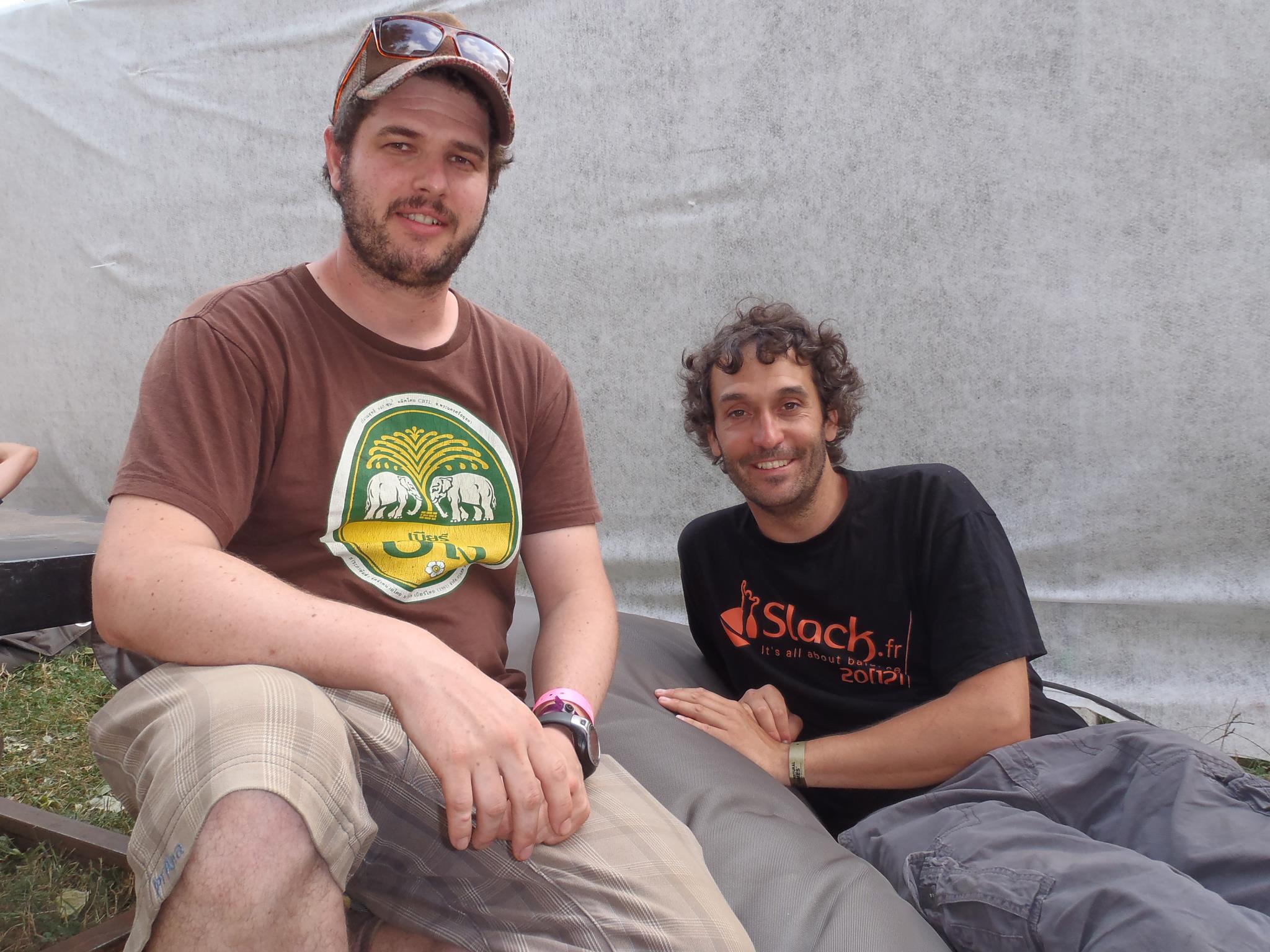
Back on an epic adventure between friends !
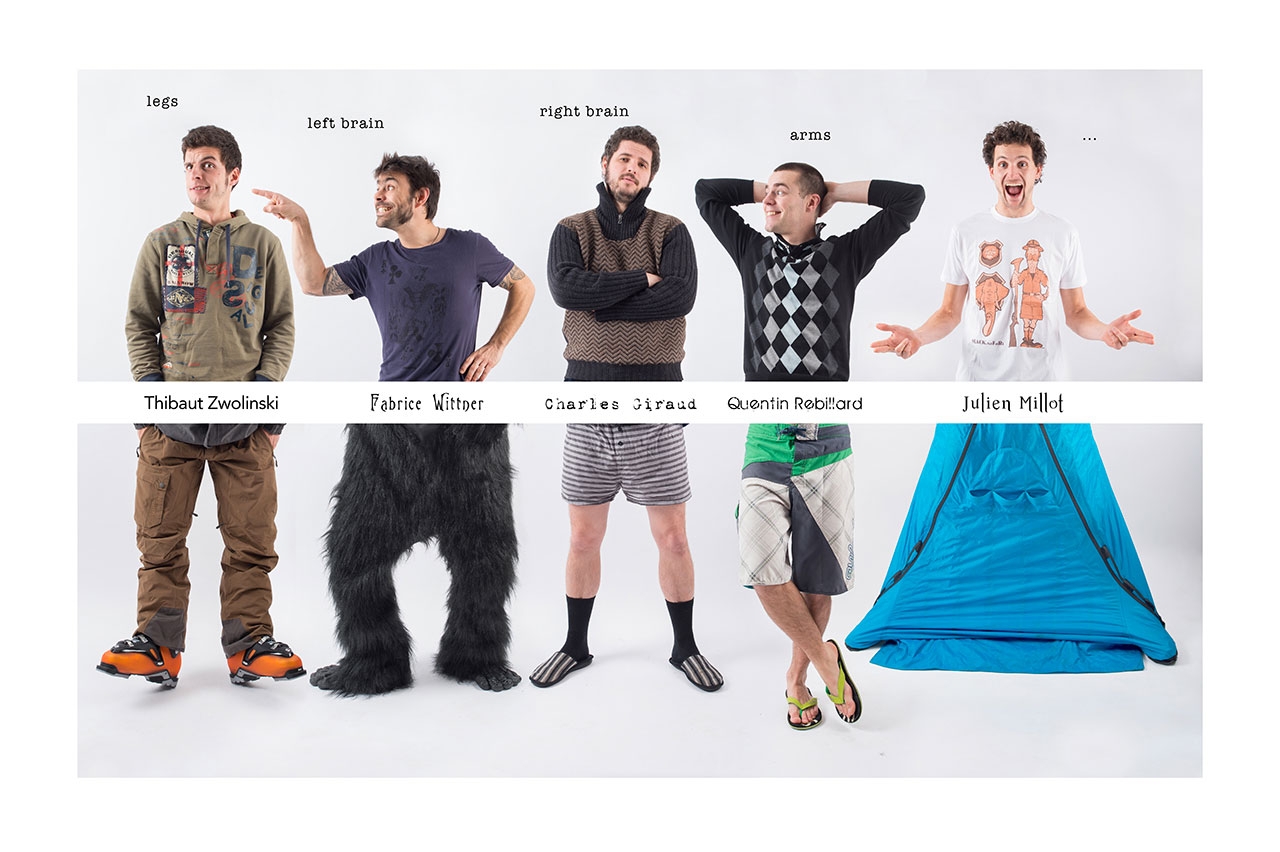
Driven by its own dynamics, since its beginnings in 2005, the Slack.fr family has grown over the seasons. Project after project, new talents have been revealed. These encounters and experiences have allowed the material to evolve while supporting the evolution of slacklining.
It’s with Jon Ritson that Damien opened the first French highline at the Parmelan in 2007. Michi Aschaber, Julien Millot and Fabrice Wittner are present in Kjerag for the highline world record in 2009. Julien and Fabrice will eventually join the Slack.fr family. Quentin Rebillard joins the adventure in 2012 to take care of deliveries and customer relations. Thibaut Zwolinski, the last one to arrive, will join the band a little later (2013). With 5 people, they run slack.fr by taking care of development, production, distribution, online sales, order preparation, graphics and design of slackline equipment – until April 2019 – closing date of the brand.
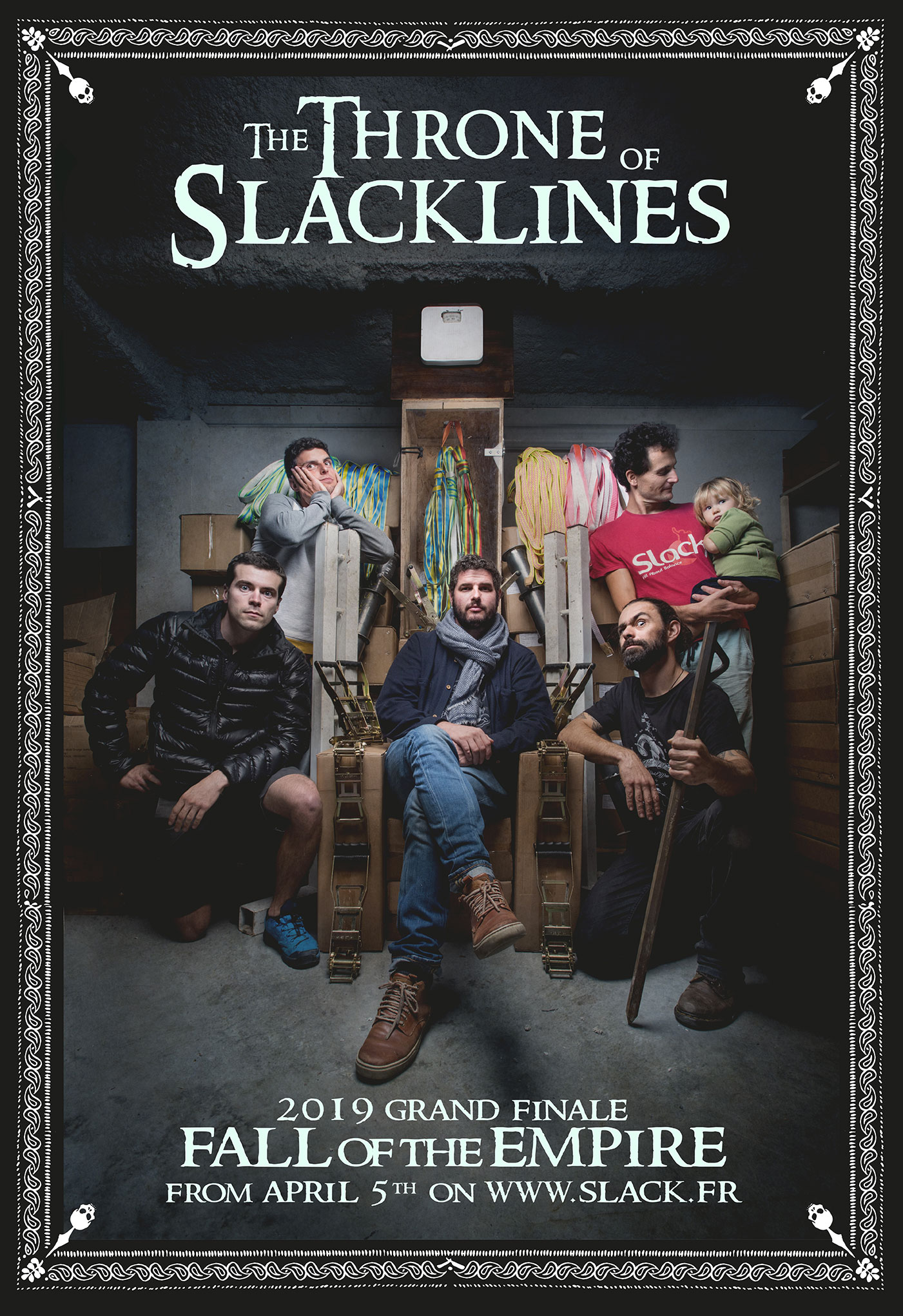
Easy Slackline, the beginning of a new era
The story did not end there ! Thibaut Zwolinski who did not want to see all those efforts and works perish in vain decide to take up the torch. Born from the ashes of Slack.fr, he created Easy Slackline in June 2019 . This new brand is focused on leisure practice, offerring equipment to set up slacklines from 15m up to 50m.
Easy Slackline offers a reduced and limited range of products to make it more understandable and accessible to beginners. The production is mainly made in France and assembled in Saint Jorioz (Annecy – Haute Savoie 74).
If you were familiar with Slack.fr and now see some similarities with Easy Slackline, it’s quite normal. Easy Slackline follows the spirit that animated Slack.fr. A new project with a shared DNA.
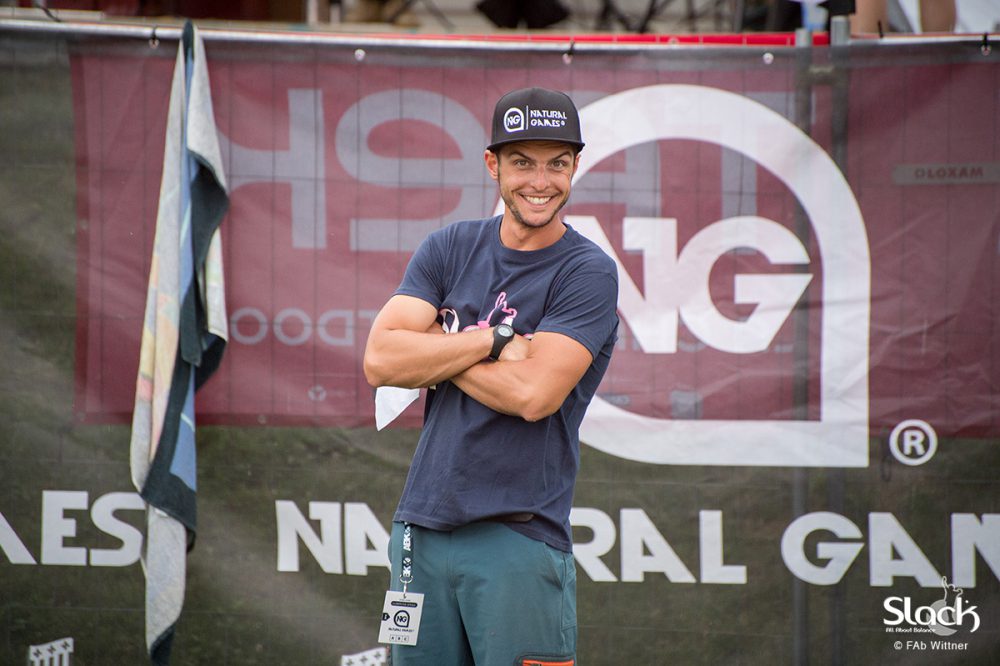
Sources :

